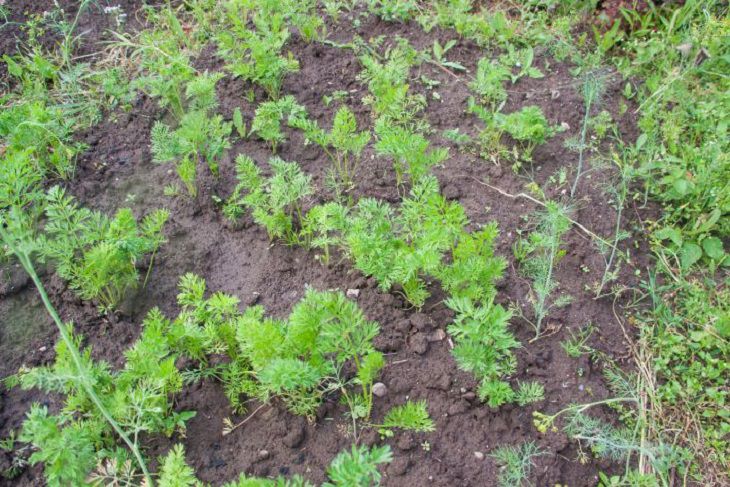The carrot fly is one of the major pests for gardeners.
Its larvae damage root crops, making them unfit for consumption.
Therefore, it is important to know what means will help protect the crop from this pest.
Proper planting planning
Protecting carrots begins with planning the planting. You should choose areas where carrots have not been grown in the last few years, as carrot fly larvae can survive in the soil.
It is recommended to alternate crops, planting carrots after onions, garlic or tomatoes, which will help reduce the risk of infection.

Using natural repellents
One of the most effective methods of combating carrot flies is the use of natural repellents.
When planting carrots, dry plants such as wormwood or pine needles are added to the furrows.
Their smell repels flies and protects young shoots. It is also useful to mulch the beds with a mixture of peat and wood ash.
Sowing remedies against carrot fly
In specialized stores you can buy granules or powders containing biological or chemical substances that repel carrot flies.
They are added to the furrows before planting seeds. Such agents effectively reduce the likelihood of pest attacks and help preserve the harvest.
Companion planting with other crops
Interplanting with other crops is another way to combat carrot fly.
It is especially useful to plant carrots next to onions or garlic.
These plants secrete substances that repel pests.
Also effective is joint planting with calendula and marigolds, which attract predatory insects that destroy fly larvae.
Covering material and its use
To protect carrots from carrot fly, you can use non-woven covering material.
It creates a barrier that prevents the fly from reaching the plants.
The covering material is stretched over the beds immediately after planting and left until mid-summer. This prevents egg laying and protects the crop.
Regular loosening and care of the beds
Regular loosening of the soil helps to destroy carrot fly larvae.
Surface loosening after each watering or rain disrupts the conditions for the development of larvae and reduces their numbers.
It is also important to remove weeds that may provide shelter for pests.
Following these rules will promote healthy plants and increase their resistance to pests.
Application of biological control agents
The use of biological control agents is becoming increasingly popular.
Such products contain entomopathogenic nematodes or fungi that attack and destroy carrot fly larvae.
Biological products are safe for plants and the environment, but require regular use to achieve maximum effect.
Effective protection of carrots from carrot fly begins with the correct choice of planting location and the use of natural repellents.
Interplanting with other crops, using covering material and regular soil loosening help reduce the risk of crop damage.
Biological pest control products complement the integrated approach, providing reliable plant protection.
Earlier we talked about how to properly water tomatoes in hot weather.








